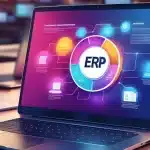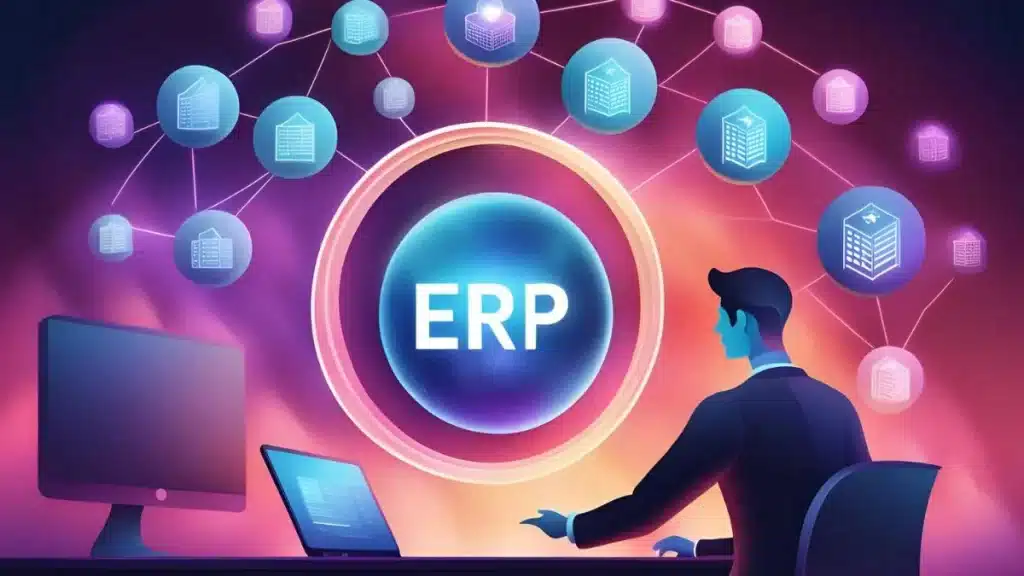Implementing an ERP system is a critical step towards streamlining your business processes. Especially in today’s rapidly evolving digital landscape, ERP can empower your organization to enhance productivity and drive growth.
From assessing your current systems to selecting the right ERP solution, configuring the system, training employees, and ensuring ongoing maintenance, we will cover all aspects of a successful ERP implementation.
This article will explore how to measure the success of your ERP implementation through key performance metrics and assess the full potential of ERP implementation for your Philippine business.

Table of Contents
Introduction to ERP Implementation
Implementing an Enterprise Resource Planning (ERP) system can be a game-changer for businesses in the Philippines. ERP integrates various business processes into a centralized system and enabling them to streamline operations.
An ERP system serves as the backbone of a business, facilitating seamless communication and data sharing across departments. It provides real-time insights and analytics, enabling better decision-making and strategizing for improved business outcomes.
With ERP, businesses can overcome the challenges associated with managing multiple software applications, scattered data, and complex processes, enabling them to achieve operational efficiency and scalability.
ERP implementation offers significant benefits and Philippine businesses can position themselves for success and unlock their full potential in today’s competitive business landscape.
The Comprehensive Steps to Implementing ERP
Implementing an ERP system requires careful planning and execution. By following a comprehensive set of steps, you can ensure a smooth and successful implementation process. Let’s explore each step in detail:
- Assessing current systems and identifying needs: It is crucial to assess your current systems and identify the areas that need improvement. Evaluate your existing software, processes, and data management practices to determine the gaps that an ERP system can address.
- Defining scope and goals: Set clear goals and objectives that align with your organization’s vision and strategy, ensuring that the implementation process remains focused and targeted.
- Configuring the ERP system: Customize the system to reflect your business processes, workflows, and data requirements. Work closely with the ERP vendor or implementation partner to ensure a seamless configuration process.
- Data preparation and migration strategies: Cleanse and validate the data, ensuring its accuracy and integrity. Develop a migration strategy that includes data mapping, extraction, transformation, and loading techniques to minimize disruptions and ensure a successful transition.
- Rigorous testing: Conduct comprehensive unit testing, integration testing, and user acceptance testing to validate the functionality, performance, and usability of the system.
- Employee training: Develop a comprehensive training program that covers all modules and functionalities of the ERP system. Provide hands-on training, workshops, and continuous support to empower your employees to effectively utilize the system.
- Full implementation and transition: Plan the go-live carefully, considering factors such as timing, resource allocation, and minimizing disruptions to daily operations. Monitor the implementation closely and address any issues that arise promptly.
- Ongoing maintenance and support: Regularly review the performance of the ERP system and make necessary adjustments to optimize its functionality as your business evolves.
By following these comprehensive steps, you can ensure a successful ERP upgrade implementation that enhances your business operations and drives growth.

Key Phases of ERP Implementation Plan
Implementing an ERP system in your business involves several key phases that are crucial for a successful implementation. Each phase plays a vital role in ensuring a seamless transition and maximizing the benefits of your ERP solution.
1. Discovery and planning
The discovery and planning phase is the initial stage of implementing an ERP system. It involves conducting a thorough analysis of your current processes, systems, and requirements.
2. Design
In the design phase, the focus is on creating a blueprint for your ERP system. This involves mapping out your business processes, workflows, and system configurations to ensure that your ERP system aligns with your specific business needs and requirements.
3. Development
During the development phase, the actual implementation of your ERP system takes place. This includes customizing the ERP software, integrating it with existing systems, and developing any necessary interfaces or functionalities.
4. Testing
Testing involves rigorous testing of various scenarios, data migration, and ensuring that the system meets your business requirements. Thorough testing helps identify and resolve any issues or bugs before moving on to the deployment phase.
5. Deployment
The deployment phase includes installing the software, configuring the system, and migrating data from legacy systems. It is crucial to ensure a smooth and seamless transition to minimize disruptions to your business operations.
6. Support and updates
This phase involves providing user training, resolving any issues or concerns, and keeping the system up to date with regular updates and patches. Continuous support and updates optimize the performance and functionality of your ERP system over time.
Best Practices for a Smooth ERP Implementation
Implementing an ERP system requires careful planning and execution to ensure a successful deployment. To help you navigate the complexities associated with ERP implementation, below is a list of best practices for businesses in the Philippines.
- Involving stakeholders: By involving stakeholders from different departments and levels of the organization, you can gather valuable insights and ensure their needs are met during the implementation.
- Understanding complexity: It is essential to have a clear understanding of the intricacies involved and plan accordingly. Conduct a thorough assessment of your current systems and processes to identify the challenges and potential roadblocks that may arise.
- Dedicated implementation team: This team should consist of individuals with the necessary expertise and knowledge to manage the implementation process effectively. Assign clear roles and responsibilities to team members to ensure smooth coordination and execution.
- Comprehensive training: Provide training sessions tailored to different user groups and roles within the organization. This will help maximize user adoption and minimize resistance to change.
- Ongoing support: Establish a robust support system to provide timely assistance and maintain the system’s reliability and performance.
Avoiding Common ERP Implementation Mistakes
Implementing an ERP system can be a complex and challenging endeavor for businesses. To ensure a successful ERP rollout, it is crucial to avoid common implementation mistakes and pitfalls.
Rushing into implementation without a clear understanding of your business needs and objectives can lead to costly errors and delays. Take the time to thoroughly assess your current systems and select the right ERP system that aligns with your requirements.
ERP systems involve multiple modules and functionalities, each requiring meticulous configuration and integration. Failing to understand the intricacies of the implementation can lead to system inefficiencies and limited functionality. It is essential to allocate sufficient time and resources for a comprehensive and well-documented implementation plan.
Insufficient employee training is another common pitfall. Providing comprehensive training programs that cover all aspects of the ERP system is crucial for maximizing user adoption and optimizing system utilization.
Furthermore, inadequate ongoing support and maintenance can derail the success of your ERP implementation. It is essential to have a dedicated team that can address issues, provide updates, and continuously optimize the system to meet evolving business needs.
By avoiding these common mistakes and potential challenges, you can position your business for a successful ERP rollout. Your ERP implementation can also drive operational efficiency and propel your business towards growth and success.
Measuring the Success of Your ERP Implementation
Once your ERP system is implemented, it is crucial to measure its success and assess its impact on your business performance. By monitoring key metrics, you can gauge the effectiveness of your ERP implementation and make informed decisions to optimize its benefits.
There are several key metrics that you should consider when measuring the success of your ERP implementation:
- Cost savings: Measure the cost savings achieved through process optimization, reduced inventory, and increased efficiency. Assess the financial impact of your ERP system in terms of labor cost reduction, streamlined operations, and improved resource allocation.
- Productivity improvement: Evaluate how your ERP system has improved productivity across departments. Identify areas where productivity has increased and where further improvements can be made.
- Customer satisfaction: Monitor customer feedback, response times, and order accuracy to determine if the implementation has resulted in enhanced customer experiences and improved overall satisfaction.
- Inventory management: Monitor inventory turnover rates, stock-out levels, and lead times. Assess the system’s ability to optimize inventory levels, reduce carrying costs, and minimize stock-outs.
- On-time delivery: Monitor metrics such as order fulfillment rates, delivery lead times, and customer complaints related to late deliveries. Measure the system’s ability to improve order processing, reduce delivery delays, and enhance customer trust.
- Employee adoption: Measure user acceptance rates, training completion rates, and employee feedback to evaluate the system’s ease of use and its ability to enhance employee productivity.
- System uptime: Monitor system downtime, response times, and error rates to identify potential performance issues and address them promptly to minimize disruptions and maximize system reliability.
By regularly assessing these key metrics, you can gain valuable insights into the effectiveness of your ERP implementation and make necessary adjustments to optimize its impact on your business performance.
FAQs: Everything You Need to Know About ERP
Are you considering implementing an ERP system for your business? We understand that you might have questions and concerns. In this section, we address some of the most common FAQs about ERP to help you gain a better understanding of this powerful business solution.
What is ERP?
ERP stands for Enterprise Resource Planning. It is a software system that integrates various business functions, such as finance, sales, inventory, and human resources, into a single centralized platform. This allows for seamless data sharing, improved collaboration, and streamlined processes across your entire organization.
Businesses can benefit from enhanced scalability, increased productivity, and improved customer relationship management. They can an leverage ERP to optimize complex processes, gain better control over their operations, and achieve cost savings through improved resource management.
What are some key features of ERP?
ERP systems typically offer a suite of features that cover various aspects of a business, including:
- Financial management
- Inventory and supply chain management
- Customer relationship management
- Human resources and payroll
- Business analytics and reporting
- Project management
How long does it take to implement an ERP system?
The time it takes to implement an ERP system can vary depending on factors such as the complexity of your business processes, the size of your organization, and the scope of customization required.
Generally, it can take several months to a year for a successful ERP implementation, including planning, system configuration, data migration, testing, and user training.
How can I ensure a successful ERP implementation?
To ensure a successful ERP implementation, it is crucial to:
- Thoroughly assess your business requirements
- Involve key stakeholders in the planning and decision-making process
- Choose the right ERP system that aligns with your needs
- Invest in comprehensive training for your employees
- Ensure ongoing support and maintenance for a smooth transition
If you have more questions about ERP or need assistance with implementation, our team of experts is here to help. Contact us today to learn more.
Conclusion: The Path Forward with ERP in the Philippines
ERP offers a centralized platform that allows for better decision-making, improved collaboration, and increased productivity across departments.
It empowers organizations to optimize their operations, respond to market demands more effectively, and ultimately achieve sustainable growth.
Choose the best integrated ERP system like HashMicro ERP software to achieve enhanced efficiency, streamline operations, and unlock new avenues for success in the dynamic business landscape of the Philippines.
Try the free demo now!



























